Front Street West, Bedlington, Northumberland, NE22 5TZ
This was built in 1902 as a replacement for an inn of the same name which stood on the site. This was ‘an extended stone building next to a row of cottages’. The inn is recorded on the map of Bedlington drawn in c1860. The Red Lion is also recorded in the earliest surviving Bedlington Parish Directory of 1827, when the licensee was Joseph Younger.
Photographs and text about Doctor Trotter.
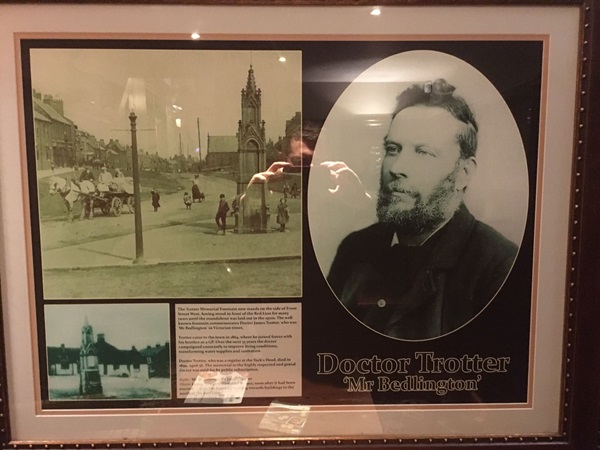
The text reads: The Trotter Memorial now stands on the side of the Front Street West, having stood in front of The Red Lion for many years until the roundabout was laid out in the 1970s. The well-known fountain commemorates Doctor James Trotter, who was ‘Mr Bedlington’ in Victorian times.
Trotter came to the town in 1864, where he joined forces with his brother as a GP. Over the next 35 years the doctor campaigned constantly to improve living conditions, transforming water supplies and sanitation.
Doctor Trotter, who was a regular at the Turk’s Head, died in 1899, aged 56. The memorial to the highly respected and genial doctor was paid for by public subscription.
Right: ‘Mr Bedlington’, Dr James Trotter
Above: James Trotter’s memorial in 1902, soon after it had been erected
Left: The fountain looking towards buildings to the north of The Red Lion.
Photographs and text about St Cuthbert’s Church.
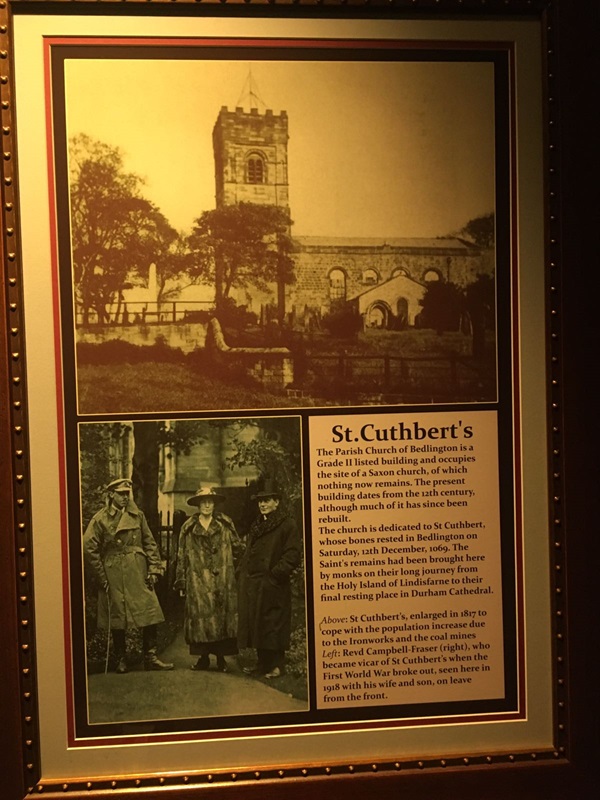
The text reads: The Parish Church of Bedlington is a Grade II listed building and occupies the site of a Saxon church, of which nothing now remains. The present building dates from the 12th century, although much of it has since been rebuilt.
The church is dedicated to St Cuthbert, whose bones rested in Bedlington on Saturday, 12 December, 1069. The Saint’s remains had been brought here by monks on their long journey from the Holy Island of Lindisfarne to their final resting place in Durham Cathedral.
Above: St Cuthbert’s enlarged in 1817 to cope with the population increase due to the iron works and the coal mines
Left: Revd Campbell-Fraser (right), who became vicar of St Cuthbert’s when the First World War broke out, seen here in 1918 with his wife and son, on leave from the front.
Prints and text about Bedlington Iron Works.
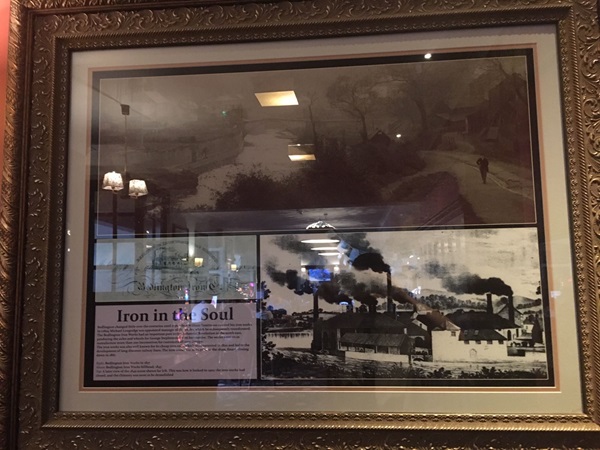
The text reads: Bedlington changed little over the centuries until 1736, when William Tomlinson opened his own works. In c1809 Michael Longridge was appointed manager of the works, which he subsequently transformed. The Bedlington Iron Works had an important part in the Industrial Revolution in the north east, producing the axles and wheels for George Stephenson’s first locomotive.
The works went on to manufacture more than 200 locomotives for customers all over Europe. The iron works was also well known for its cheap iron rails, which were patented until 1820 and led to the development of long distance railway lines. The iron works was at its peak in the 1850s, finally closing down in 1867.
Right: Bedlington Iron Works in 1827
Above: Bedlington Iron Works billhead, 1843
Top: A later view of the 1840 scene shown far left. This was how it looked in 1902; the iron works had closed, and the chimney was soon to be demolished.
An illustration, photograph and text about the Bedlington Terrier.
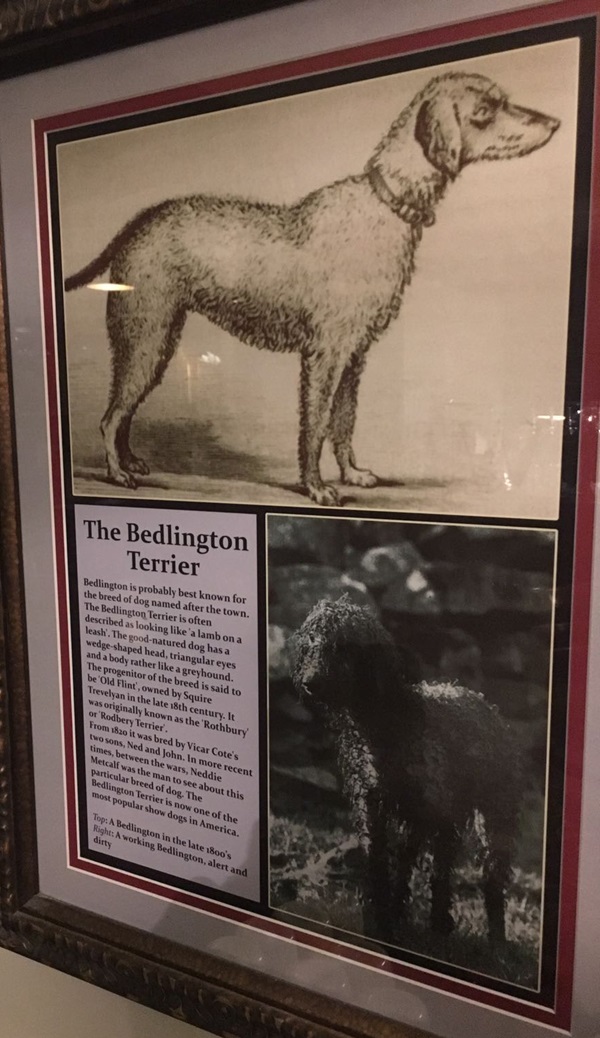
The text reads: Bedlington is probably best known for the breed of dog named after the town. The Bedlington Terrier is often described as looking like ‘a lamb on a leash’. The good-natured dog had a wedge-shaped head, triangular eyes and a body rather like a greyhound.
The progenitor of the breed is said to be Old Flint, owned by Squire Trevelyan in the late 18th century. It was originally known as the Rothbury or Rodbery Terrier.
From 1820 it was bred by Vicar Cote’s two sons, Ned and John. In more recent times, between the wars, Neddie Metcalf was the man to see about this particular breed of dog. The Bedlington Terrier is now one of the most popular show dogs in America.
Top: A Bedlington in the late 1800s
Right: A working Bedlington, alert and dirty.
A bench outside the pub, inspired by the Bedlington Terrier.
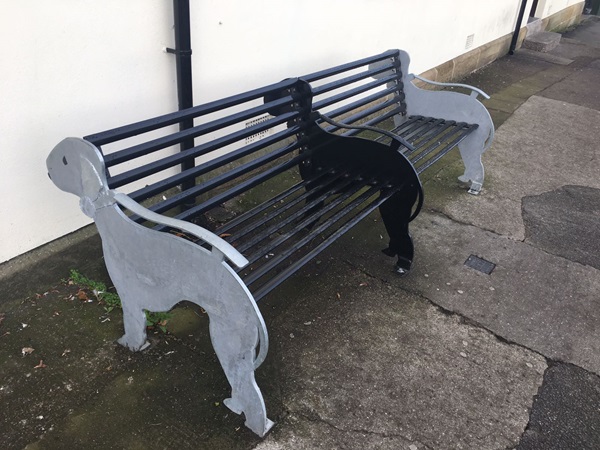
A wired sculpture entitled Give a Dog a Bone, by Gary Tiplady.
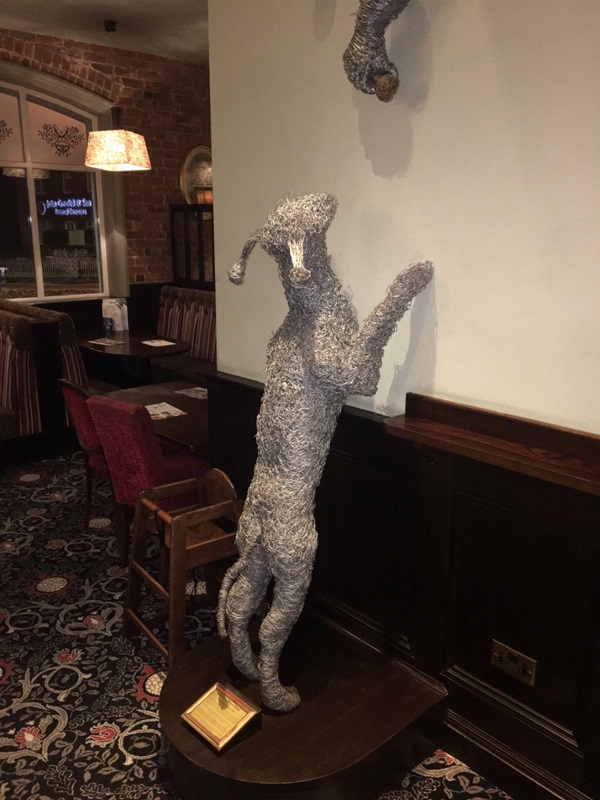
Gary is both an artist and local celebrity. Born and bred in Newcastle Upon Tyne, he started his working life as a top chef (he even cooked for the Queen) and adorned many a banquet with his lard sculptures. He had to make wire armatures to support these short-lived artworks, and this has led to a new career as a wire sculptor.
With his exceptionally large hands he has become well-known for bending and shaping sheets of wire into life-like animals.
Gary, who stands 7’3” tall, is also in demand as an actor. He has appeared in several films and television programmes and makes regular appearances at charity events, especially Pudsey Bear appeals for the charity Children in Need.
He has had commissions from Rolls Royce, Newcastle Race Course and Newcastle United Football Club to name but a few.
External photograph of the building – main entrance.
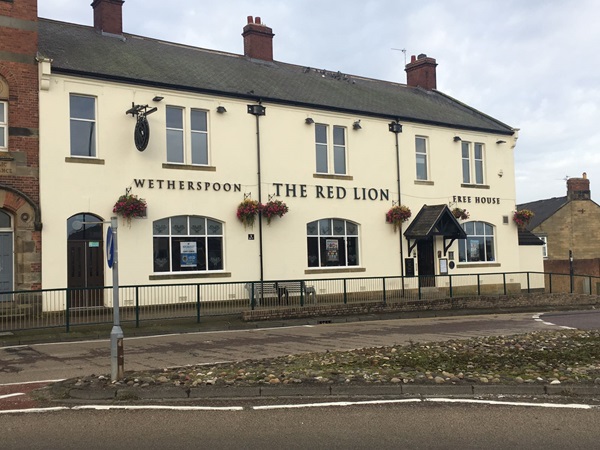
If you have information on the history of this pub, then we’d like you to share it with us. Please e-mail all information to: pubhistories@jdwetherspoon.co.uk